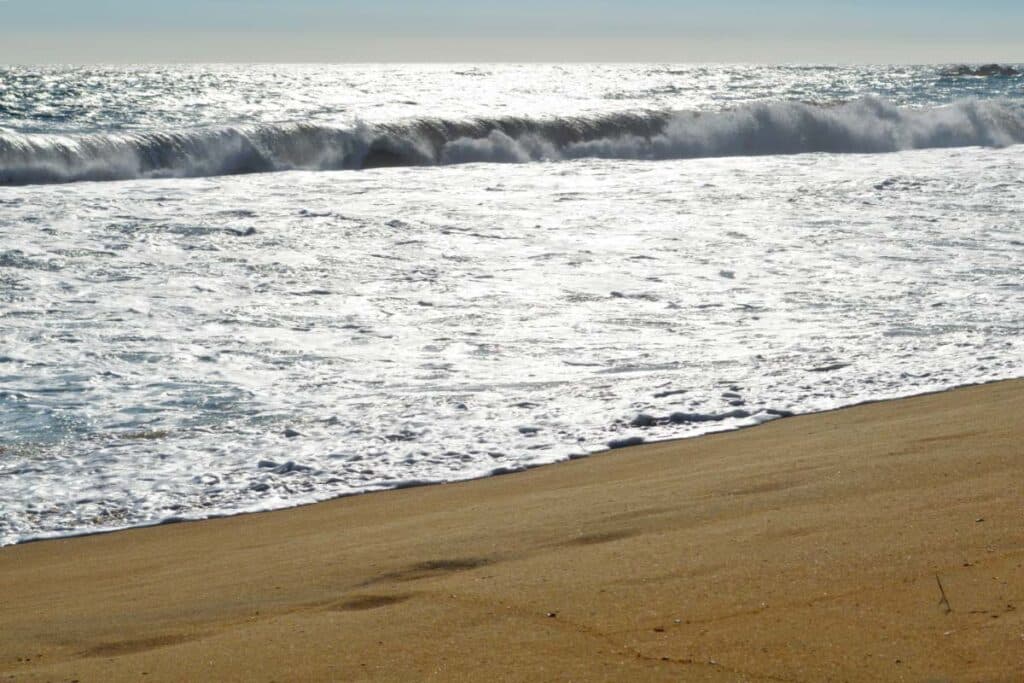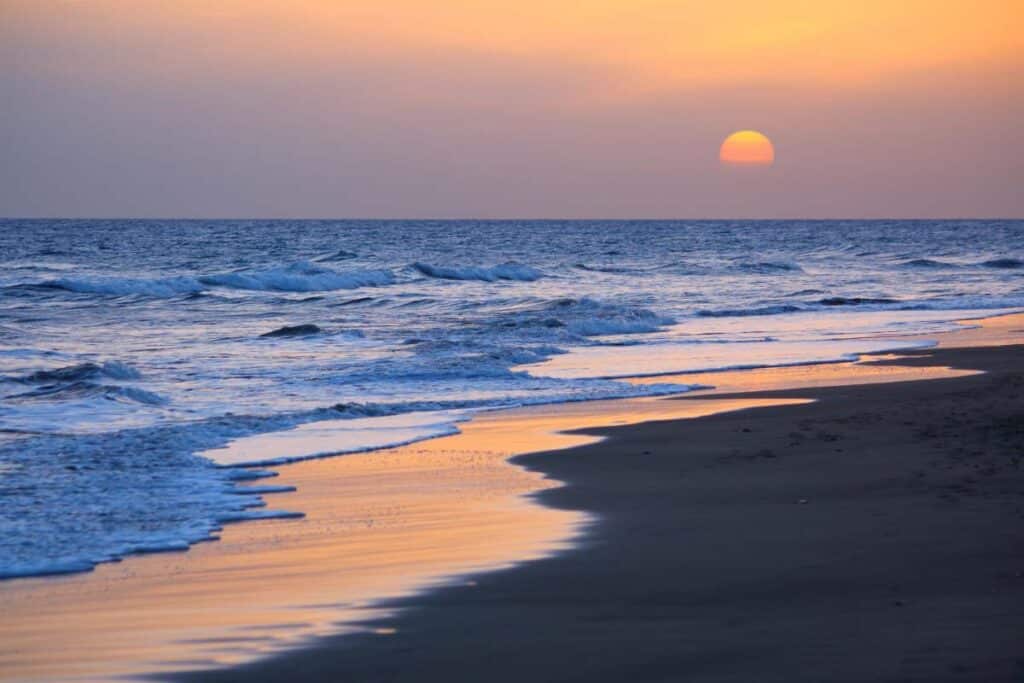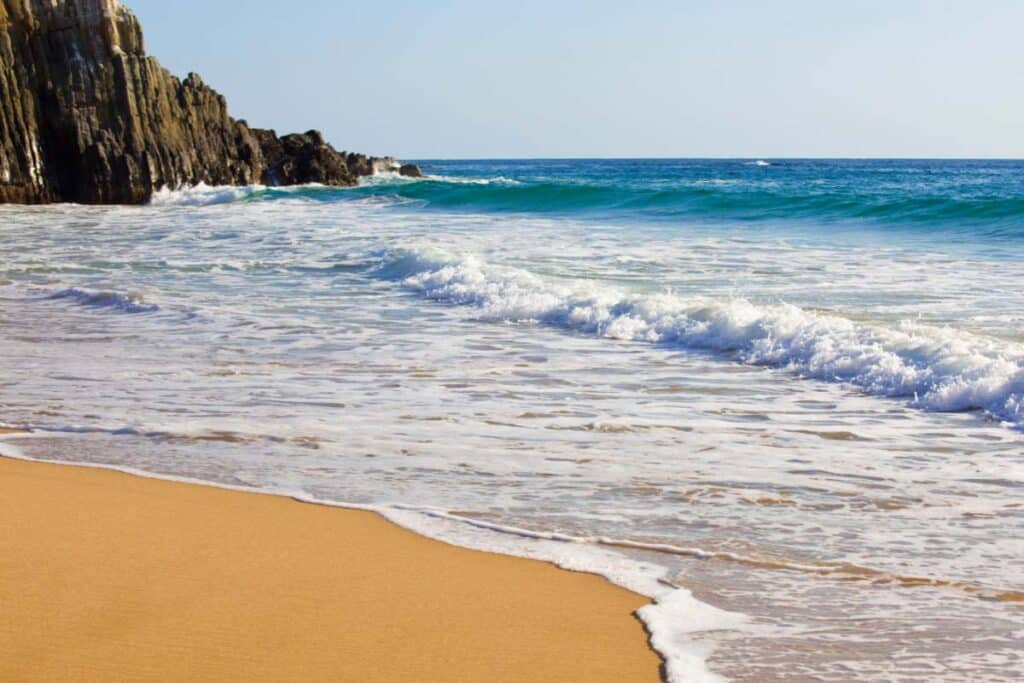If you’re planning a beach vacation, you may be stuck on where to go. Both Atlantic and Pacific beaches offer many great spots, ideal for relaxing in the sun, enjoying the water, or simply wading in the shallows.
Deciding which is better comes down to personal preference. You may like quieter beaches or ones with seashells and waves. Many factors make a beach great, but it comes down to what you enjoy. There are lots of Atlantic and Pacific destinations to choose from that offer fantastic experiences.
Atlantic beaches like Clearwater Beach and The Hamptons are better if you enjoy fast-paced adventures, luxurious ambiance, and gentler winds. For a laid-back vibe, exciting waves, and diverse sceneries, Pacific beaches like Washington’s Long Beach and California’s Laguna Beach are hard to beat.
To mediate in this battle of the beaches, we curated the perks both strings of beaches offer. We also included the pros and cons, plus some of the best beaches on the East and West Coasts.

Atlantic vs Pacific Oceans
Before we get to the beaches, let’s look at the bigger picture – the oceans.
| Atlantic | Pacific | |
|---|---|---|
| Size | 41 million square miles | 60 million square miles |
| Temperature | Warmer | Colder |
| Waves and wind | Gentler winds | Higher waves |
Which Ocean Is Clearer: Pacific or Atlantic?
The Atlantic Ocean is clearer than the Pacific Ocean because the latter is bigger.
When pure ocean water lies far away from the coast and beyond the continental shelf, it looks darker than the variedly constituted coastal water.
The color of pure water is determined by Rayleigh scattering, making it blue. Coastal waters have suspended sediments, phytoplankton, and yellow organic dissolved matter, making it greenish or brownish.
However, ocean water is essentially colorless. Larger oceans, like the Pacific, tend to look darker (bluer) when the sun’s blue spectrum gets scattered back out.
Superficially, the Atlantic Ocean looks green while the Pacific Ocean looks blue.
Is The Pacific Ocean Rougher Than The Atlantic?
The Atlantic Ocean is rougher and more dangerous because of its quick temperature changes, water currents, and exposure to coastal winds.
Compared to the ‘calmer’ Pacific Ocean, the Atlantic Ocean ranks second among the most dangerous oceans in the world.
The Water
On average, Atlantic beaches (East Coast) have warmer water than Pacific Beaches (West Coast), primarily due to how ocean water behaves.
Since it rotates clockwise, water travels from the south (warm) to Atlantic waters (east) while the Pacific waters (west) come from the north (chilly Gulf of Alaska).
But in the overall scheme of things, the Pacific ocean is the warmest. Its surface area in the tropics that welcomes the sun’s heat is nearly twice the size of the Atlantic.
Atmosphere and Climate
The number of states involved plays a role when comparing Atlantic vs Pacific beaches.
Fourteen states are involved in Atlantic beaches, while the Pacific beaches have three, giving the Atlantic variety in atmosphere and climate. During summer, the weather on Atlantic beaches is humid and sticky, while Pacific beaches experience dryness.
Sand
The Pacific beaches have rougher sand. You’ll also likely find more rocks here than on Atlantic beaches.
Culture
Because of the Pacific’s adventurous waves, more people flock to its beaches to surf. Like Muscle Beach and Malibu Beach, the West Coast has a laid-back charm, and you can sense it among the shops and beachgoers. A selection of national parks in the northern part offers scenic views and natural beauty.
Due to the influence of states like New York, Atlantic beaches exude a faster lifestyle. Beaches like Myrtle Beach in South Carolina or Nantucket in Massachusetts are close to clubs and activities that keep people busy. Similarly, Martha’s Vineyard and The Hamptons have private beaches frequented by the elite.
Pros and Cons

Atlantic Beaches Pros
- Boardwalks (Jersey Shore)
- More hotels, casinos, and highrise buildings
- Long chains of barrier islands
- Ice cream (Waterbury, Vermont)
- Variety of nice sandy beaches
- Clearer and warmer waters in the south
- Experience all four seasons
- Tasty and fresh seafood (Baltimore, Maryland)
Atlantic Beaches Cons
- Exposure to coastal winds
- Rapid temperature changes
- The waters are constantly unsettled by gyres and currents
- Dangerous tides and sea creatures
- Hurricanes
- Summer is hot and humid
- Flat sand and modest dune line (except Outer Banks of North Carolina and Cape Cod in Massachusettes)
Pacific Beaches Pros
- Single-family beach homes
- Spectacular and diverse sceneries (mountains, marine life, and dense forests)
- Wilderness right on the coast (bears foraging on the intertidal zone at low tide)
- More linear miles of beautiful coastline
- Excellent for surfing, diving, and other water sports (consistently large waves)
- Laid-back appeal
Pacific Beaches Cons
- Its depth and waves can sink ships
- Larger hurricanes
- Venomous jellyfish
- Descend bluffs or cliffs to reach the beach
- Cold water, even in the summer
Best Beaches
It’s a long-standing debate whether the East Coast (Atlantic) or the West Coast (Pacific) has the best beaches. And it’s not an easy choice, especially if you check out the following amazing beaches.
From remote destinations to a fantastic surf ride, these beaches are worth returning to summer after summer. Bring a Coleman Skydome Camping Tent with Dark Room Technology (view on Amazon), perfect for spending a long, fun-filled day at the beach.
Atlantic Beaches
Clearwater Beach, Florida
Proud of its 3-mile stretch, Clearwater Beach fills up with tourists throughout the year. Serene isn’t its scene because people enjoy this spot for parasailing, beach volleyball, speedboat fishing excursions, and dolphin spotting cruises. But if solitude is your jam, go north to the Honeymoon Islands and Caladesi. And if you navigate toward the Louisiana border, you’d find the remote Grayton Beach, Florida’s most scenic sand stretch.
The Hamptons, New York
This is heaven for the New York’s elite, with its oceanfront estates and seaside resorts. There are members-only golf clubs, high-end boutiques, and luxurious spas along the pristine sandy shores. For inexpensive indulgences, check out the Hither Hills State Park. It’s on the northern tip with a fully serviced camping ground amidst a scenic backdrop.
Myrtle Beach, South Carolina
At the heart of Southern Carolina’s 60-mile Grand Strand is Myrtle Beach, among the eastern US’ popular seaside resorts. This beach is a magnet for large crowds with its selection of pubs, theme parks, and restaurants. Its calm waves and silky sands draw people in to tan under the sun, sail their boats, and swim. To take a break from the crowd, head toward the Myrtle Beach camping grounds.
Pacific Beaches
Laguna Beach, California
An iconic strand in the heart of luxurious Orange County, this beach offers a backdrop of hiking trails at the Crystal Cove State Park. Go north to Maro Canyon for a secluded ambiance, relax at Thousand Steps Beach’s caves and rock pools, or head to the people-watching paradise of Main Beach. There also is the clifftop restaurant Las Brisas to grab some Tequila or Tex-Mex.
Cannon Beach, Oregon
A moody ambiance is the greatest takeaway from this beach. Its famous outcropping, Haystack Rock, is a favorite among photography enthusiasts, including the rock pools and elks prancing the coastal meadows. It’s also an ideal spot for art enthusiasts with a quaint seaside village home to a vibrant artisanal scene. Portland hipsters flock to the beach to check out craftings like pottery, glassblowing, and jewelry making.
Long Beach, Washington
A 28-mile stretch with stunning views, Long Beach offers water adventures like oyster picking and salmon fishing. You can even go horseback riding on the beach! There’s an annual kite festival every August while hikers explore the 9-mile Discovery Trail. Camping is excellent right off the main beach near the spooky lighthouse of Cape Disappointment.
Are California Beaches Better Than Florida?

From the vast comparison of Atlantic vs Pacific beaches, let’s dive a little deeper. How do California beaches compare with Florida beaches?
California Beaches
- Dramatic mountains, cliffs, and forests
- Great waves for surfing
- Spectacular rugged coastline (The Lost Coast)
- Comfortable climate
Florida Beaches
- 1,350 miles of shoreline
- Many publicly accessible beaches
- Beach sections to drive a car
- Soft sands (South Beach in Miami and the Gulf Coast)
- Great for shell collecting (Sanibel Island)
- Barrier reefs that inhibit large waves
Conclusion: Atlantic vs Pacific Beaches
From the Atlantic’s North and South America on the west to Europe and Africa on the east, plus the Pacific’s 60-million square miles from California to China, you’d find the finest sandy stretches of beaches that will always be worth visiting. So, ‘better’ is a personal choice.
When comparing Atlantic vs Pacific beaches, it boils down to what fires your spirit, interests, and preferences that rank high on your list. Whether it’s about the vibe, water activities, or surrounding elements, choosing one string of beaches over the other will always be a better choice.
